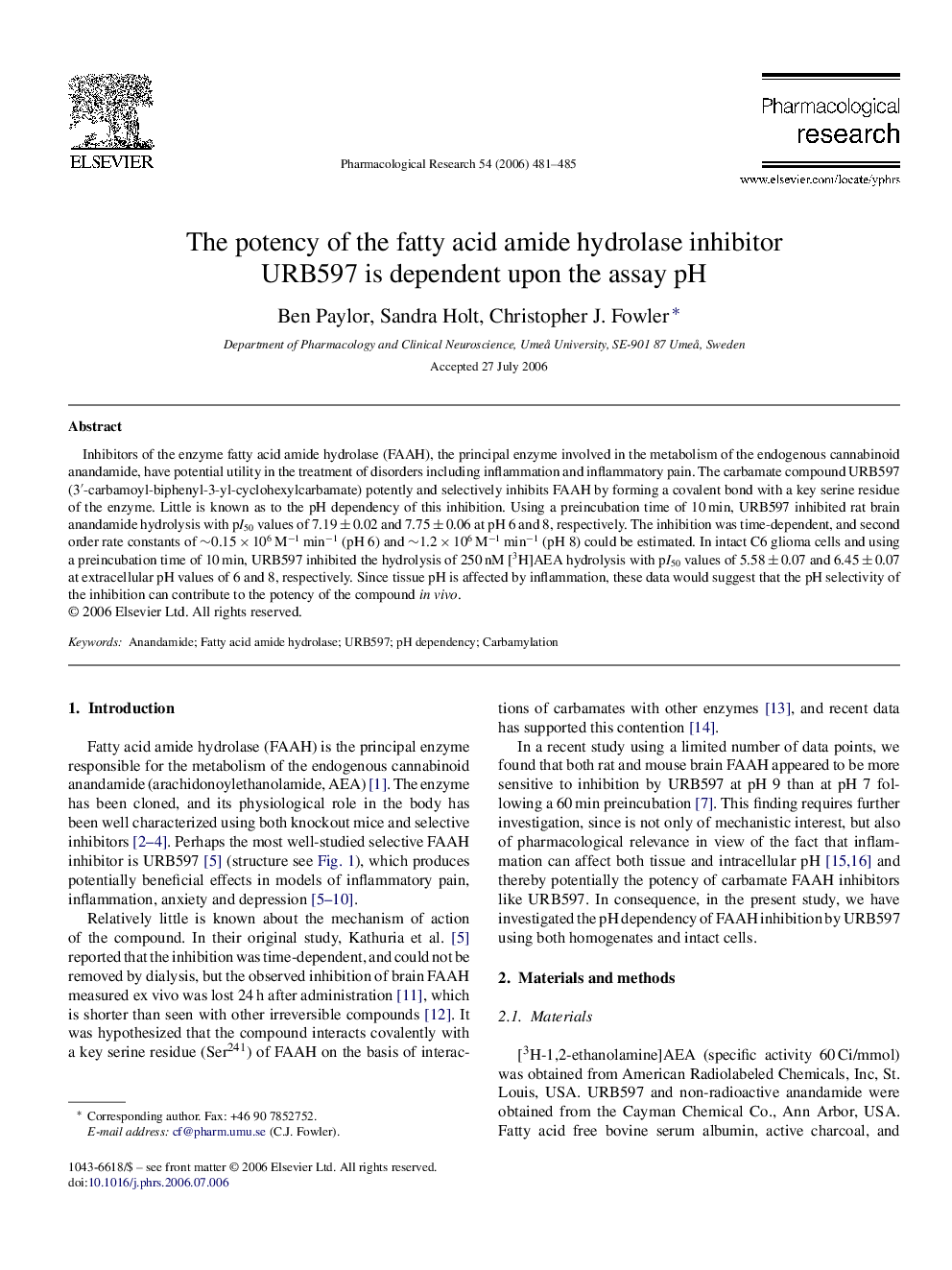| Article ID | Journal | Published Year | Pages | File Type |
|---|---|---|---|---|
| 2562530 | Pharmacological Research | 2006 | 5 Pages |
Inhibitors of the enzyme fatty acid amide hydrolase (FAAH), the principal enzyme involved in the metabolism of the endogenous cannabinoid anandamide, have potential utility in the treatment of disorders including inflammation and inflammatory pain. The carbamate compound URB597 (3′-carbamoyl-biphenyl-3-yl-cyclohexylcarbamate) potently and selectively inhibits FAAH by forming a covalent bond with a key serine residue of the enzyme. Little is known as to the pH dependency of this inhibition. Using a preincubation time of 10 min, URB597 inhibited rat brain anandamide hydrolysis with pI50 values of 7.19 ± 0.02 and 7.75 ± 0.06 at pH 6 and 8, respectively. The inhibition was time-dependent, and second order rate constants of ∼0.15 × 106 M−1 min−1 (pH 6) and ∼1.2 × 106 M−1 min−1 (pH 8) could be estimated. In intact C6 glioma cells and using a preincubation time of 10 min, URB597 inhibited the hydrolysis of 250 nM [3H]AEA hydrolysis with pI50 values of 5.58 ± 0.07 and 6.45 ± 0.07 at extracellular pH values of 6 and 8, respectively. Since tissue pH is affected by inflammation, these data would suggest that the pH selectivity of the inhibition can contribute to the potency of the compound in vivo.
